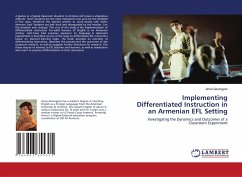The 1880s marked the beginning of a remarkable interest to bring changes in second language teaching in Europe, and the 1960s and 1970s the appearance of different innovative language teaching practices in different parts of the world. In the 1980s, the CLT theories and practices gained popularity all over the world within a short period of time, and countries recommended the use of CLT methodologies in language classrooms. However, a lot of problems encountered the practical implementation of CLT techniques in classrooms, particularly in the third world. Based on reviews and research findings, this book discusses problems observed in the implementation of CLT techniques in EFL classrooms in Ethiopia. It also indicates directions to be followed in implementing innovative language teaching practices in the third world, taking the Ethiopian context as an example. The book is extremely useful for policy makers, syllabus designers, trainers, students, language teachers, and researchers.
Bitte wählen Sie Ihr Anliegen aus.
Rechnungen
Retourenschein anfordern
Bestellstatus
Storno








